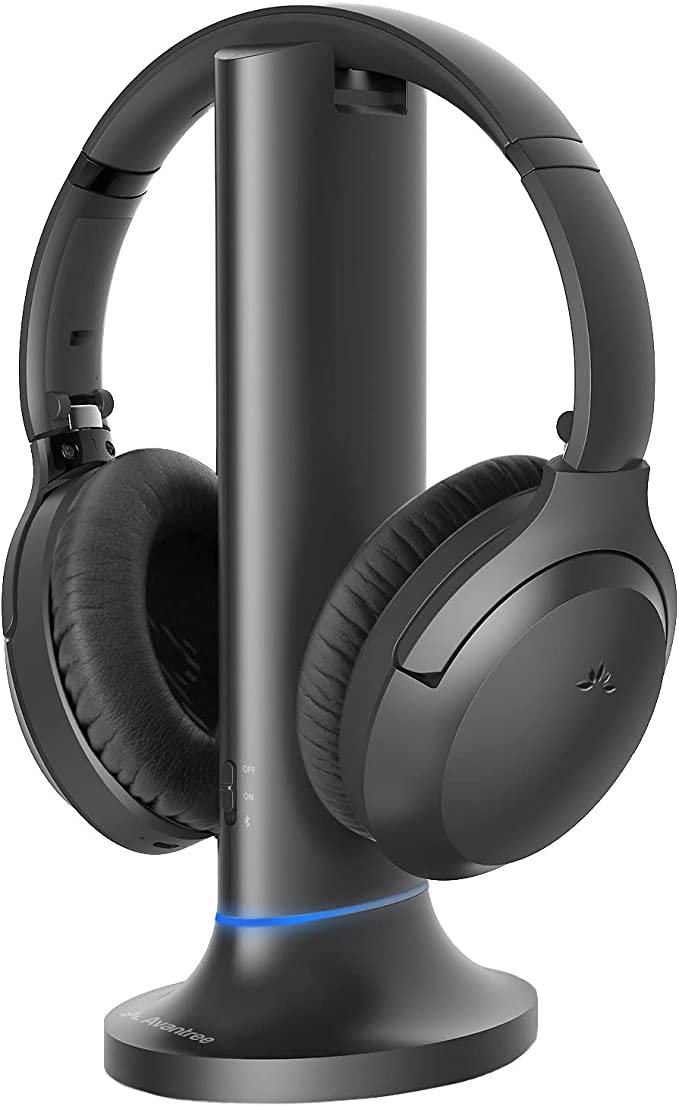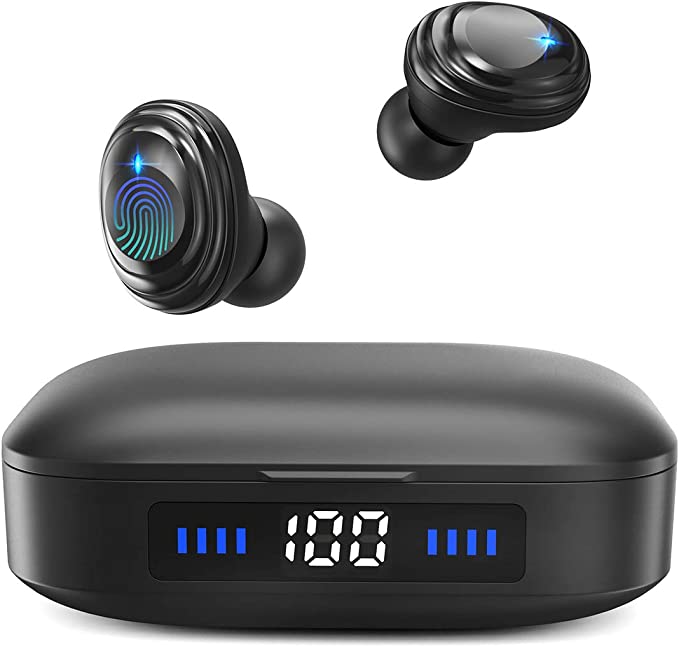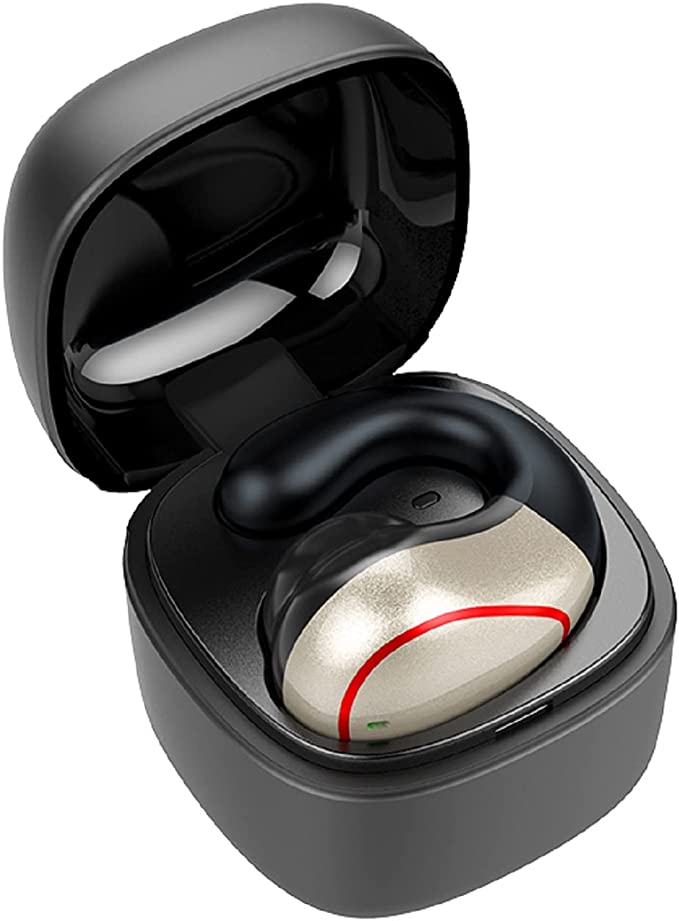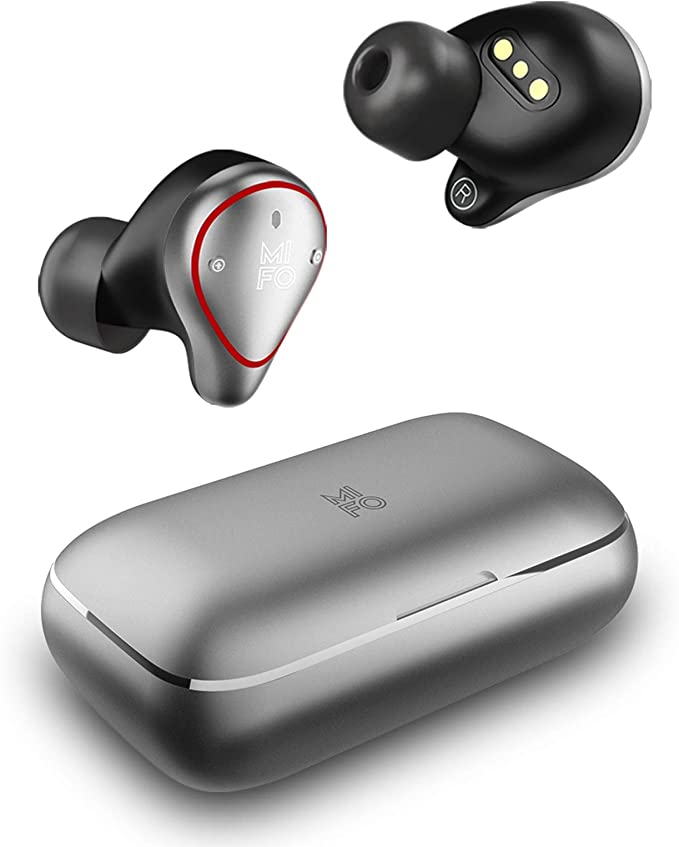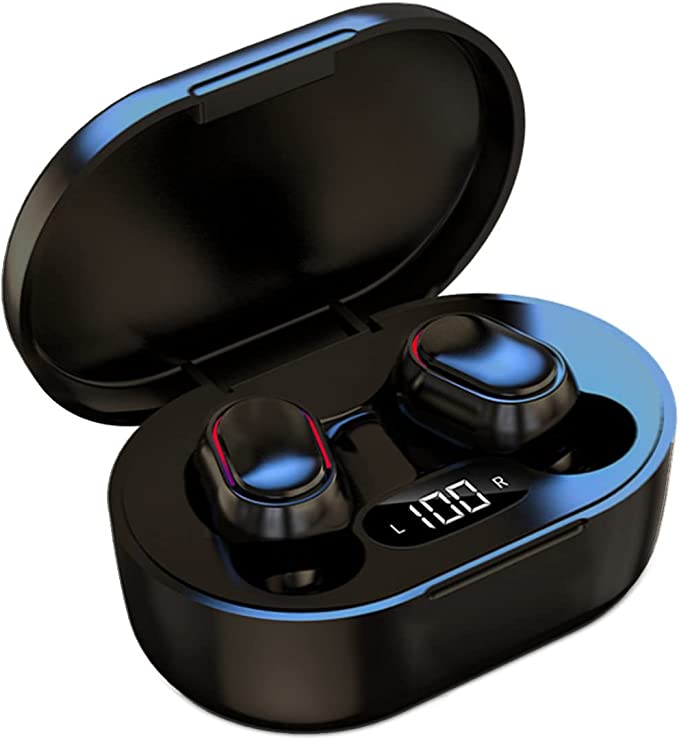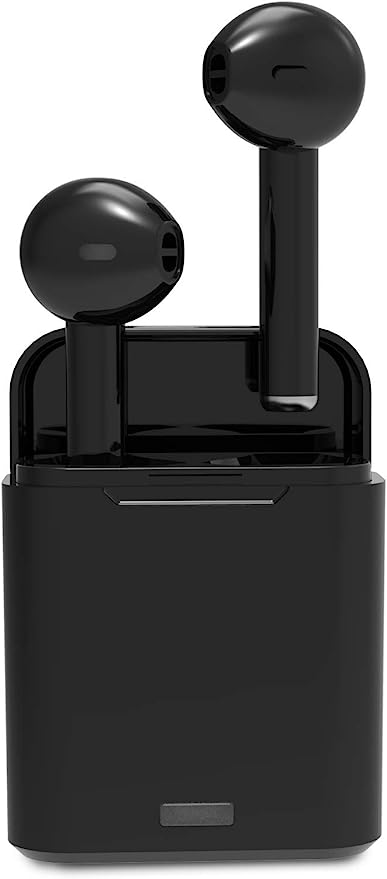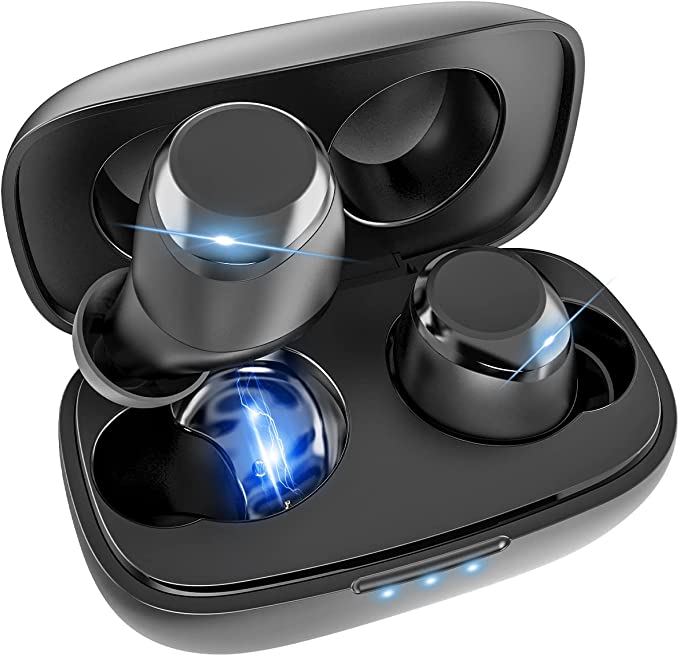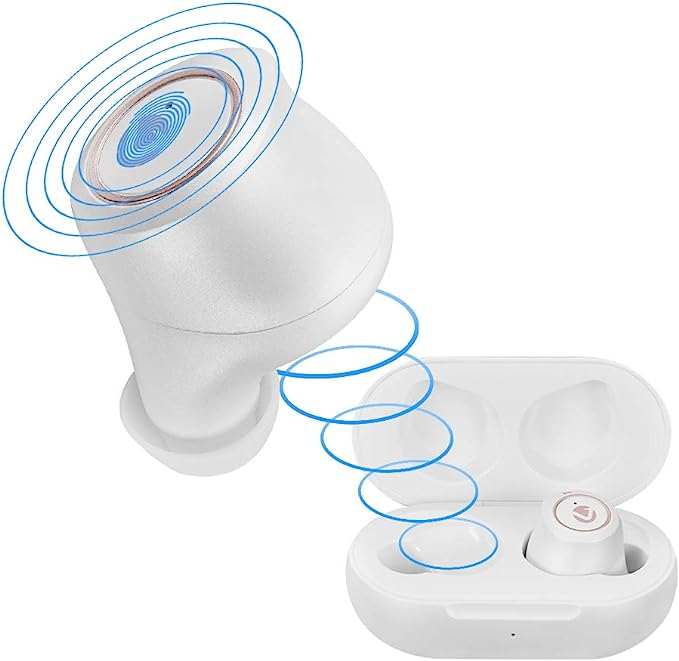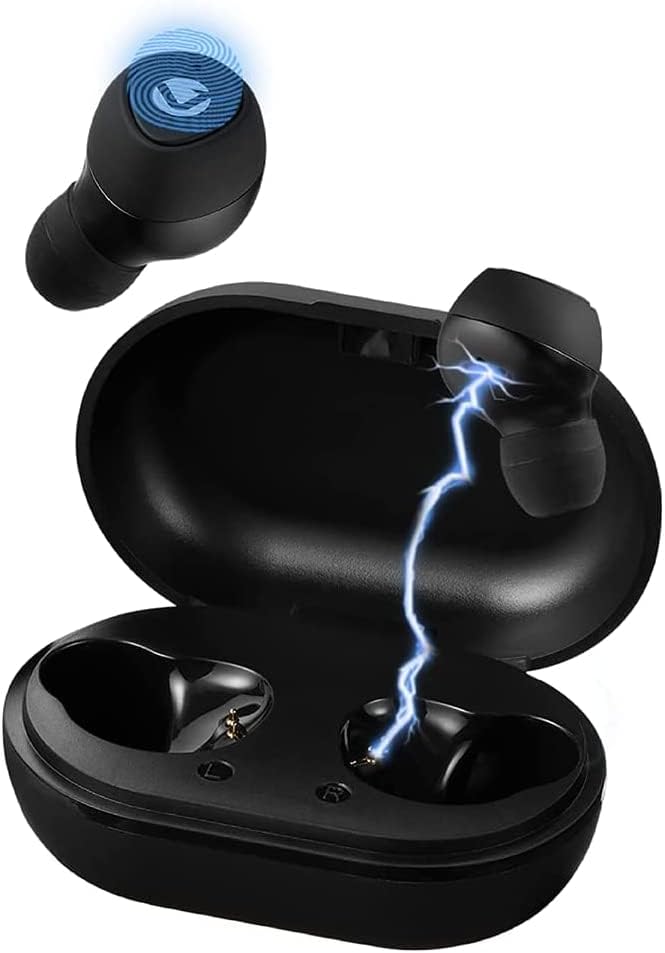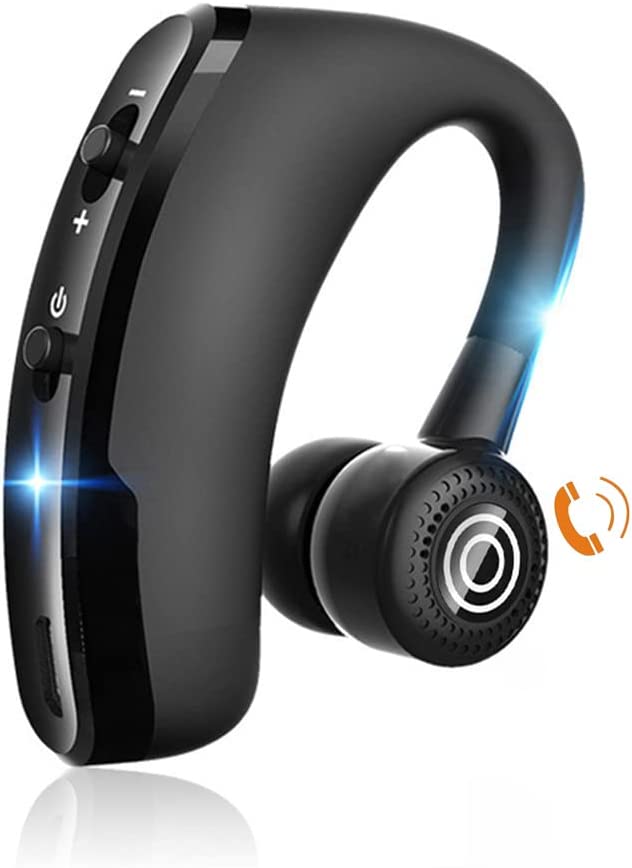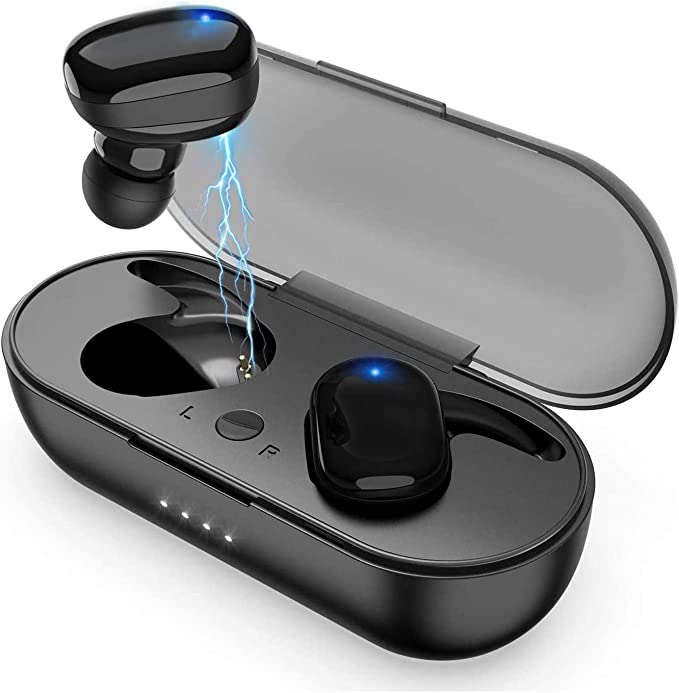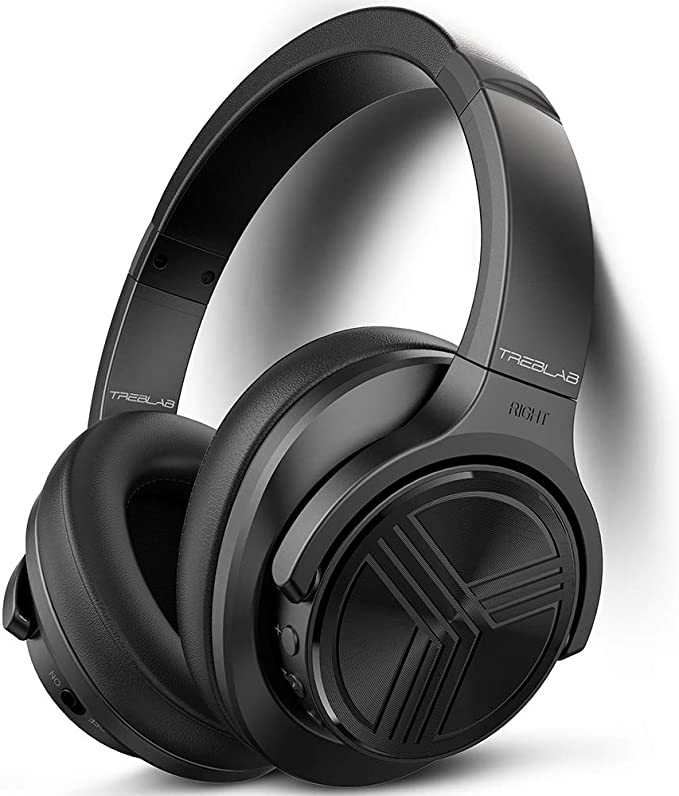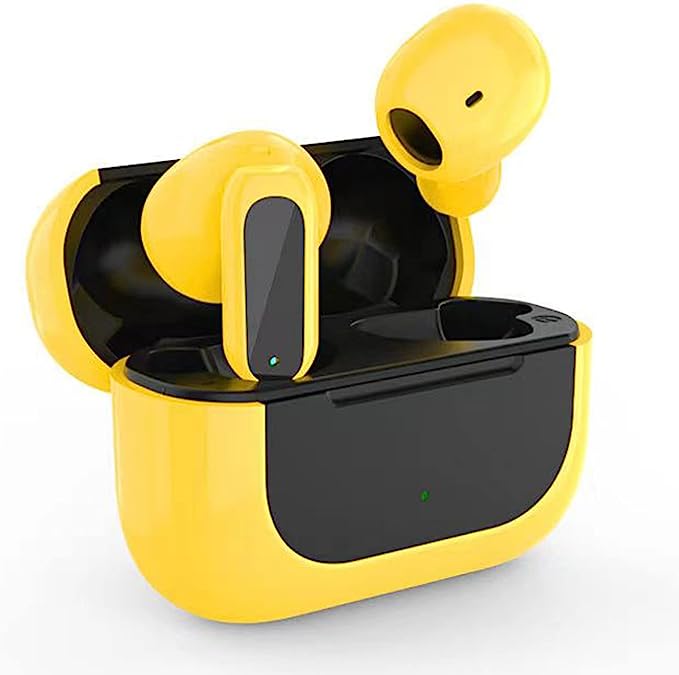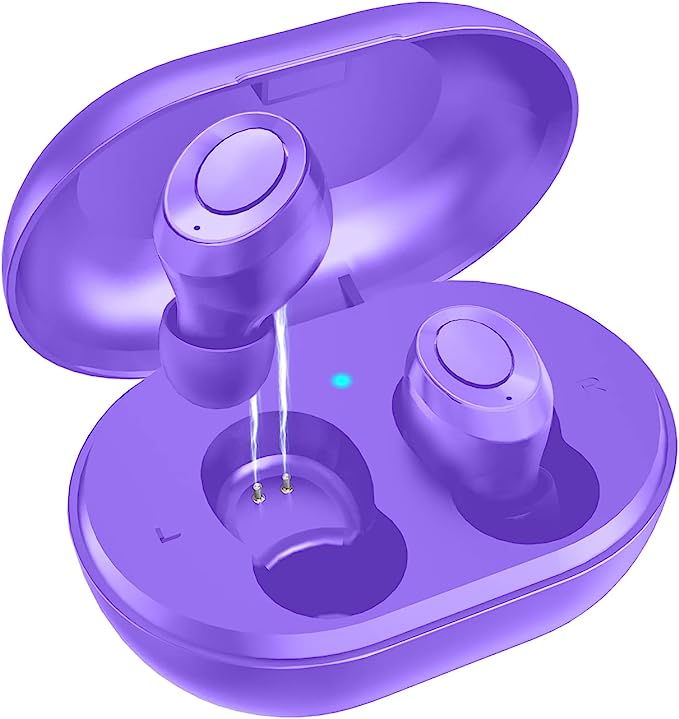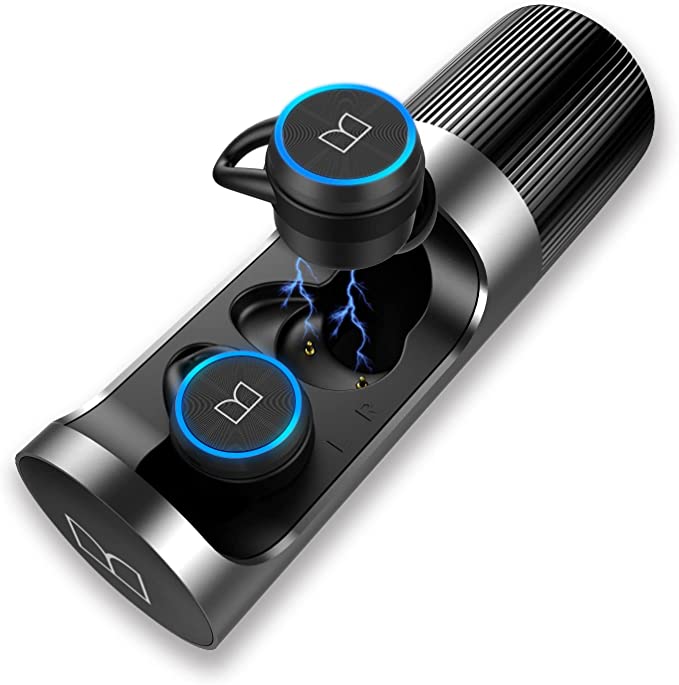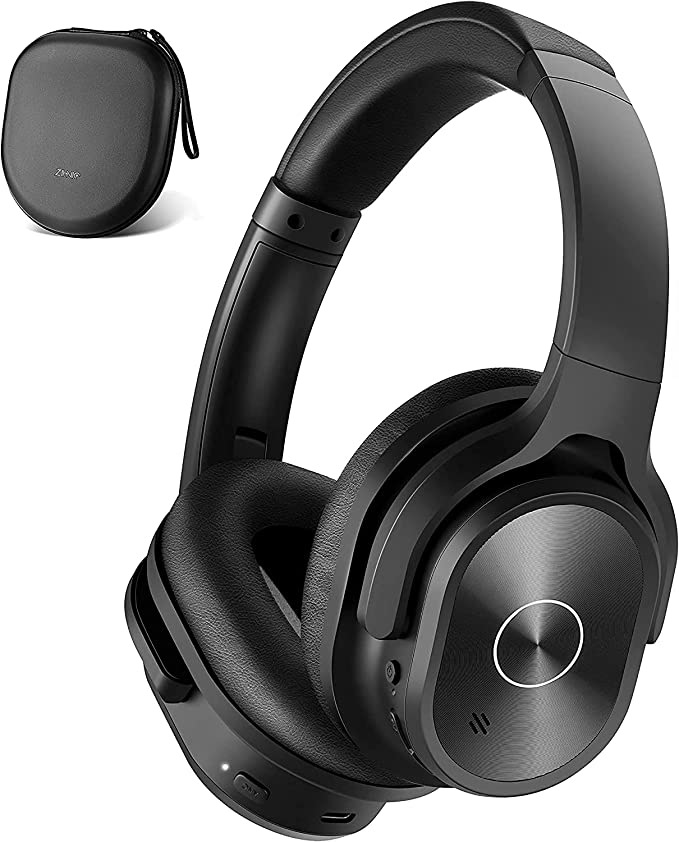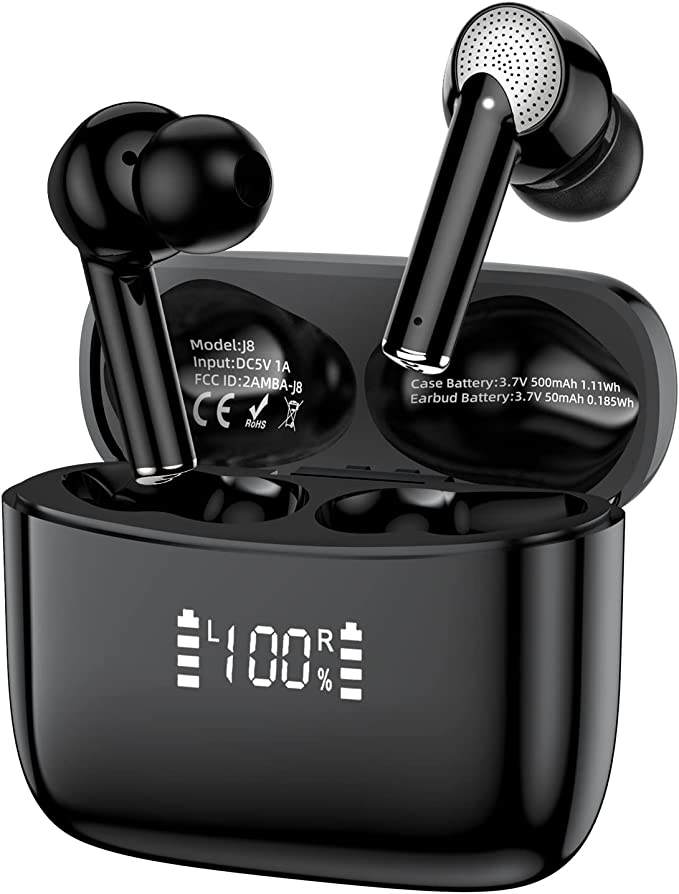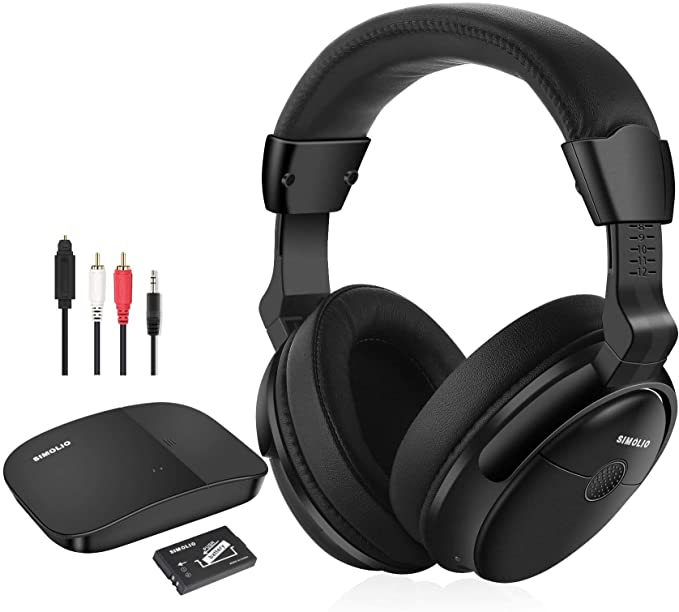Avantree Ensemble Wireless Over-Ear Headphones
Update on June 6, 2025, 4:47 p.m.
It’s a scene played out in countless living rooms: one person inches the TV volume céu, straining to catch a crucial whisper of dialogue, while another, seeking a moment of peace, subtly reaches for the remote to nudge it back down. Or perhaps it’s the late-night movie buff, craving a cinematic experience but tethered by the fear of waking a sleeping household. This silent, often good-natured, tug-of-war over sound is a modern domestic ballet. But what if technology could offer a graceful resolution, a way to immerse yourself in rich, clear TV audio without disturbing the peace or missing a single word? Enter solutions like the Avantree Ensemble, wireless headphones designed not just for listening, but for restoring a little harmony to our shared spaces. This isn’t just about a product; it’s about understanding the clever science and thoughtful design that makes such personal audio bliss possible.

Cutting the Cord, Not the Quality: The Bluetooth 5.0 Promise
The first piece of magic in the Avantree Ensemble’s toolkit is its wireless heart: Bluetooth 5.0. Think of Bluetooth as an invisible, highly skilled messenger, ferrying audio signals from your TV (via the Ensemble’s transmitter) to your ears. Now, Bluetooth has been around for a while, but version 5.0 is a significant step up from its older siblings. It offers a more robust and reliable connection, capable of transmitting data faster and over greater distances. Avantree states these headphones utilize Class 1 Bluetooth, a specification that relates to the power output of the Bluetooth radio. Higher power generally means a longer range, and in this case, it translates to a claimed operational distance of up to 100ft (or about 30 meters). Imagine grabbing a drink from the fridge or stretching your legs during a commercial break without the audio sputtering or dropping out. That’s the freedom Bluetooth 5.0, particularly a Class 1 implementation, aims to provide – a stable, far-reaching audio link that keeps you connected to your show.
But the true genius of the Ensemble system lies in its universal compatibility, a feature made possible by its versatile transmitter. This compact hub is like a multilingual diplomat for audio signals, equipped to converse with virtually any television, regardless of its age or built-in capabilities. It achieves this through a trio of input options: * Optical (Toslink): This is a digital connection that transmits audio data as pulses of light through a fiber optic cable. Because it’s digital, it’s less susceptible to interference and can carry high-quality, uncompressed audio signals (like PCM, which we’ll touch on later). Most modern flat-screen TVs sport an optical output. * 3.5mm AUX: The humble headphone jack. This analog connection is a near-universal standard, found on everything from ancient CRT TVs to modern laptops and smartphones. It carries the audio signal as an electrical wave. * RCA (Red and White Connectors): These iconic analog connectors, typically red for the right audio channel and white for the left, were a mainstay of home audio-video equipment for decades. Many older TVs and stereo systems still rely on them.
By including all three, Avantree ensures a “plug and play” experience for the vast majority of users. You simply connect the transmitter to the appropriate audio output port on your TV, power it up, and the headphones (which are usually pre-paired with the transmitter) should establish a connection almost instantly. No complex software installations, no diving deep into TV menus for Bluetooth pairing (unless your TV only offers smart Bluetooth connections, which Avantree advises against using with their dedicated transmitter for optimal performance). It’s designed for simplicity, getting you to your personalized audio experience with minimal fuss.

The Race Against Time: Why Lip-Sync Delay Ruins Everything
There’s a particular kind of frustration reserved for when an actor’s lips move, and a noticeable fraction of a second later, you hear their words. This audio-visual mismatch, commonly known as lip-sync delay or latency, can shatter immersion faster than a dropped remote. Our brains are incredibly sensitive to this asynchrony; we’re wired to expect sound and sight to be perfectly aligned. Typical Bluetooth audio solutions, especially older ones or those not optimized for video, can exhibit latencies of 200 milliseconds (ms) or even higher. To put that in perspective, 200ms is two-tenths of a second – a delay that is easily perceptible and undeniably distracting, especially during dialogue-heavy scenes or fast-paced action.
The Avantree Ensemble directly confronts this challenge, claiming an audio latency of under 40 milliseconds (<40ms) when used with its dedicated transmitter. Why is this <40ms figure so crucial? Generally, audio latencies below this threshold are considered imperceptible or negligible by most people. The sound appears to happen in perfect concert with the on-screen action. Achieving such low latency in a wireless system is no small feat. It often involves the use of specialized audio codecs (coder-decoders) designed for speed. While the product information doesn’t explicitly name the codec used, technologies like aptX Low Latency (aptX LL) are well-known in the audio world for their ability to compress and transmit audio with minimal delay, making them ideal for video and gaming applications. The Ensemble’s transmitter and headphones are engineered to work as a synchronized pair, minimizing the processing time at both ends of the signal chain to keep that delay to an absolute minimum. This commitment to low latency is what transforms the wireless TV experience from a potentially compromised one into a seamlessly enjoyable one.

Inside the Sound Chamber: The 40mm Driver’s Tale
So, the signal has arrived wirelessly and in perfect sync. But what actually creates the sound that graces your ears? That responsibility falls to the drivers housed within each earcup. The Avantree Ensemble features 40mm drivers. In the world of headphones, a driver is essentially a miniature loudspeaker, comprising a diaphragm (a thin membrane), a voice coil (a coil of wire attached to the diaphragm), and a magnet. When an electrical audio signal passes through the voice coil, it creates a fluctuating magnetic field that interacts with the permanent magnet, causing the voice coil and the attached diaphragm to vibrate rapidly. These vibrations displace air, creating sound waves that our ears interpret as music, dialogue, or explosions.
The “40mm” refers to the diameter of the diaphragm. Generally, larger diaphragms have the potential to move more air, which can be beneficial for reproducing lower frequencies (bass) with more authority and impact, contributing to what Avantree describes as “powerful audio.” However, size isn’t everything. The material of the diaphragm, the design of the voice coil and magnet structure, and the acoustic tuning of the earcup all play critical roles in the final sound signature.
Avantree also highlights a “balanced sound design” with an emphasis on “audio clarity.” This suggests an engineering approach that aims for a faithful reproduction of the original audio, without unduly exaggerating any particular frequency range. For TV watching, this is particularly important. You want dialogue to be crisp and intelligible, allowing you to catch every nuance of a performance, while still ensuring that sound effects and musical scores are rendered with sufficient detail and impact. A “balanced” approach helps prevent a muddy or boomy sound where dialogue gets lost, or a tinny sound that lacks warmth and body.
To further ensure this clarity, especially when using a digital connection like Optical, it’s often recommended to set your TV’s audio output to PCM (Pulse Code Modulation) or “Stereo.” PCM is a fundamental form of digital audio. It represents the raw, uncompressed audio signal. Many TVs, when outputting audio via Optical, might also offer options like Dolby Digital or DTS. While these are great for surround sound systems, for a stereo headphone setup like the Ensemble, PCM often provides the cleanest, most direct signal without any additional processing or potential compatibility issues that some headphones might have with multi-channel formats. It’s like giving the headphones the purest version of the audio to work with.

The Marathon Runner: 35 Hours of Uninterrupted Audio
One of the great freedoms of wireless technology is the ability to move untethered, but this freedom is quickly curtailed if your device is constantly begging for a recharge. The Avantree Ensemble addresses this with an impressive claimed audio playtime of up to 35 hours on a single charge. This kind of endurance is largely thanks to the efficiency of modern Lithium-Ion (Li-ion) batteries, the same battery technology that powers our smartphones and laptops. Li-ion batteries offer a high energy density (meaning they can store a lot of power in a relatively small and light package) and a slow self-discharge rate when not in use. Thirty-five hours is a significant amount of listening time – enough to binge-watch several seasons of a series, enjoy a week’s worth of evening movies, or simply not have to think about charging for days on end.
When the battery eventually does need replenishing, the Ensemble system offers a particularly elegant solution. The transmitter base isn’t just a conduit for audio signals; it also serves as a dedicated charging dock. You simply place the headphones onto the cradle on top of the transmitter, and they begin to recharge. Avantree states a full recharge takes approximately 2 hours. This integrated design is a thoughtful touch. It eliminates the need for fumbling with separate charging cables, provides a neat and designated spot to store the headphones when not in use, and ensures they are always ready for your next viewing session. It’s a small piece of engineering convenience that adds significantly to the overall user experience.

Your Personal Sound Cocoon: The Comfort of Over-Ear Design
Beyond the electronics, the physical design of headphones plays a crucial role in the listening experience, especially for the extended periods often associated with TV watching. The Avantree Ensemble features an “Over-Ear” (also known as circumaural) design. This means the earcups are large enough to completely encircle your ears, resting on the head around the ears rather than directly on them (like “on-ear” headphones) or inside the ear canal (like “in-ear” buds).
This over-ear form factor offers several inherent advantages, both acoustically and ergonomically:
1. Passive Noise Isolation: By creating a seal around your ears, the earcups act as a physical barrier to some of the ambient sounds in your environment. While not the active noise cancellation found in some high-end travel headphones (which use microphones and electronics to actively counteract external noise), this “passive” isolation can significantly reduce the intrusion of everyday household sounds – a conversation in the next room, the hum of an appliance, or street noise. This allows you to “listen in peace,” as Avantree puts it, and focus more intently on the TV audio without needing to crank the volume to potentially harmful levels.
2. Comfort for Extended Wear: Because the pressure is distributed over a larger area around the ears, and the ears themselves are not compressed, over-ear headphones are often considered more comfortable for long listening sessions compared to on-ear models. The Ensemble’s product description mentions soft memory foam earpads and an adjustable headband, features designed to enhance this long-term comfort. Of course, comfort is subjective and depends on individual head shape and size, but the over-ear approach generally provides a good foundation.
Furthermore, the Ensemble headphones feature independent volume controls, located directly on one of the earcups. This is a critical feature for personalized listening. It means you can adjust the loudness in your headphones to your perfect level, completely separate from the TV’s main volume. So, if you need the dialogue louder but your family prefers a quieter overall room volume, everyone can be happy. You are in control of your own auditory world.

Echoes from the Living Room: What Real Users Experience
While technical specifications paint a picture of capability, the true measure of any device lies in how it performs in the real world, in the hands of everyday users. Gleaning insights from aggregated user feedback (like that found on e-commerce platforms) can often illuminate both the triumphs and the nuanced challenges of a product’s design.
For the Avantree Ensemble, many users echo the sentiment of easy setup. The “plug and play” promise seems to largely hold true, with people appreciating the simplicity of connecting the transmitter and having the headphones pair automatically. This ease of use is a significant win, especially for those who might be less comfortable teknolojia. The clarity of sound and the absence of lip-sync delay are also frequently praised, validating the technical claims of balanced audio and low latency. Stories abound of households where the Ensemble has restored peace – allowing one person to enjoy TV at their preferred (often louder) volume while others read, sleep, or converse undisturbed. For individuals with some degree of hearing impairment, these headphones can be a revelation, making dialogue intelligible again without blasting the entire room with sound.
However, no product is without its areas for potential refinement. Some user comments suggest that the instruction manual could be more comprehensive or clearer, particularly for troubleshooting specific TV audio settings (like ensuring PCM output is correctly enabled, or navigating the intricacies of newer smart TV audio menus). While the product aims for simplicity, the sheer diversity of TV models and their software means edge cases can arise. Another point sometimes mentioned is the ergonomics of the on-headphone buttons – their placement or tactile feel. Finding and operating small buttons by touch alone, without looking, can be a learning curve for some. This speaks to the ongoing challenge in human-machine interface design: balancing functionality with intuitive operation. These are not necessarily deal-breakers but represent the kind of feedback that drives iterative design improvements in the tech world.
More Than Just Headphones: A Solution for Shared Spaces
Ultimately, the Avantree Ensemble, and devices like it, represent more than just a way to listen to television privately. They are an example of how thoughtfully applied technology can address subtle but significant challenges in our shared living environments. In a world of diverse preferences and needs, the ability to create a personalized audio bubble, perfectly tailored and perfectly synchronized, is a small but meaningful luxury.
It’s about enabling a household member who is hard of hearing to fully engage with a family movie night without the volume being uncomfortable for everyone else. It’s about the student who can watch an educational program late at night in a shared dorm room without disturbing their roommate. It’s about the simple courtesy of enjoying your action blockbuster at full tilt while your partner enjoys a quiet read nearby.
The journey of sound from the TV studio to your ears via a system like the Ensemble is a fascinating interplay of digital encoding, wireless transmission protocols, acoustic engineering, and ergonomic design. Understanding a little of the science behind Bluetooth 5.0’s reach, the critical importance of sub-40ms latency, the role of 40mm drivers in shaping sound, and the convenience of a charging dock doesn’t just demystify the technology; it enhances our appreciation for the seamless experience it aims to deliver. As personal audio technology continues to evolve, the quest for ever-clearer, more immersive, and more considerate ways to experience our digital world will undoubtedly bring even more innovations to our living rooms.
